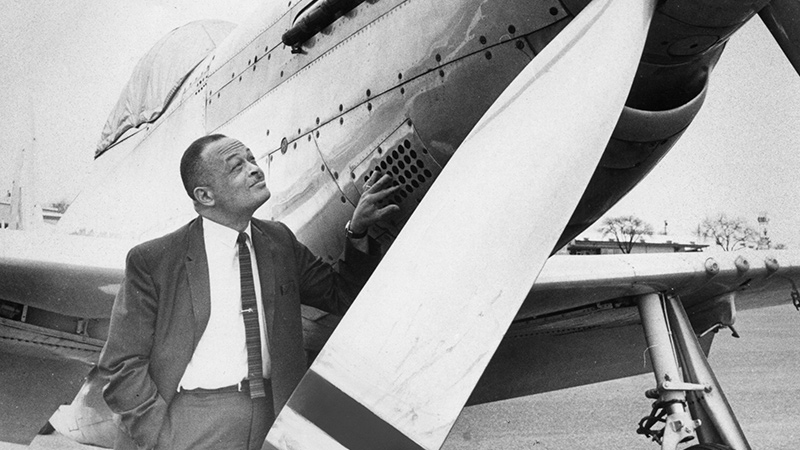Tuskegee Airmen bring leadership to Wells Fargo

Before 1948, America’s armed forces maintained strict racial segregation. African American soldiers fought and died in separate military units. Some parts of the military, including the Army Air Corps, even refused enlistment from African American soldiers.
But in 1941, Congress mandated the creation of a new all African American flying unit in the U.S. Army Air Corps. The unit, later known as the Tuskegee Airmen, formed at the Tuskegee Institute, the distinguished university in Alabama founded by Booker T. Washington 60 years earlier. Pilots Col. George S. Roberts and Lt. Col. James A. Walker, who would later become Wells Fargo employees, both trained in Tuskegee and used their skills to defend the nation.
Although they had to “fight to fight” as Walker later remembered, their courage and accomplishments — along with the hard work of fellow African American navigators, mechanics, and Army nurses — helped challenge stereotypes and end segregation in the U.S. military. In 1948, President Harry Truman ordered the integration of the country’s armed forces.

After their service, Roberts and Walker both worked for Wells Fargo in Northern California, though it’s unclear how well they knew each other. Roberts was an employee from 1968 until his retirement in 1982; Walker worked for Wells Fargo from 1965 until his retirement in 1979.
Roberts’ story

Roberts entered military service in July 1941 as the first aviation cadet selected for fighter training at Tuskegee Army Air Field. He joined the 99th Pursuit Squadron (later known as the Fighter Squadron), and on June 1, 1942, he became the first African American commander of that squadron, serving in North Africa and Italy.
Roberts first piloted an outdated P-40 Warhawk. The squadron was later equipped with new P-51 Mustangs. Roberts’ wife, Edith, once joked that the men “loved those planes more than they loved their wives.”

Roberts flew more than 100 missions during World War II and earned the Distinguished Flying Cross. After the integration of the armed forces in 1948, Roberts became the first African American officer to command a racially integrated unit at Langley Air Force Base in 1950.
In 1968, Roberts retired from a long career with the military and started working at Wells Fargo in Sacramento, California. He served as a credit officer, training officer, and personal banking officer before retiring in 1982. Roberts died in 1984 at the age of 65.

Walker’s story

Walker trained at the Tuskegee Army Air Field and was assigned to the 332nd Fighter Group, whose major responsibility was escorting bombers. After flying more than 80 missions, Walker’s P-51 fighter plane was shot down over Yugoslavia in July 1944. In enemy territory, he was confronted by an armed teenager named Aleksandr Zivkovic. Luckily, the young man was a partisan who helped downed fliers escape capture. Walker returned to duty in just 39 days thanks to Zivkovic’s help, and he had the rare chance to thank his rescuer 50 years later when he ran into Zivkovic at a Tuskegee Airmen convention in Chicago.
After a distinguished 26-year military career with service in 102 missions, Walker started working at Wells Fargo in 1965. Starting as a loan officer in Hayward, California, Walker became the first African American personal banking officer at Wells Fargo. In 1979, he retired to an active life of community volunteerism until his death in 2004 at the age of 85.

